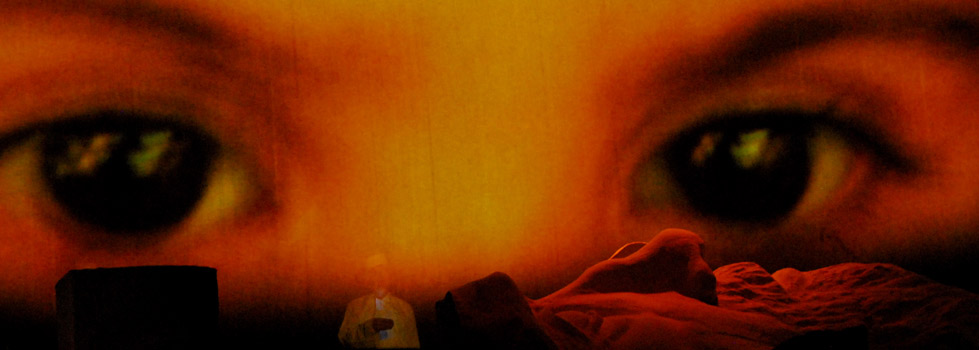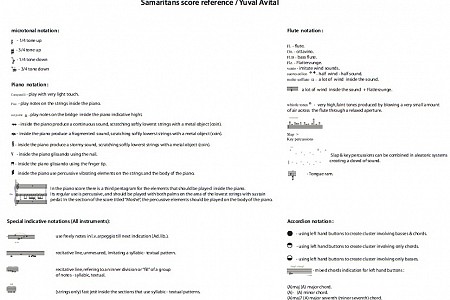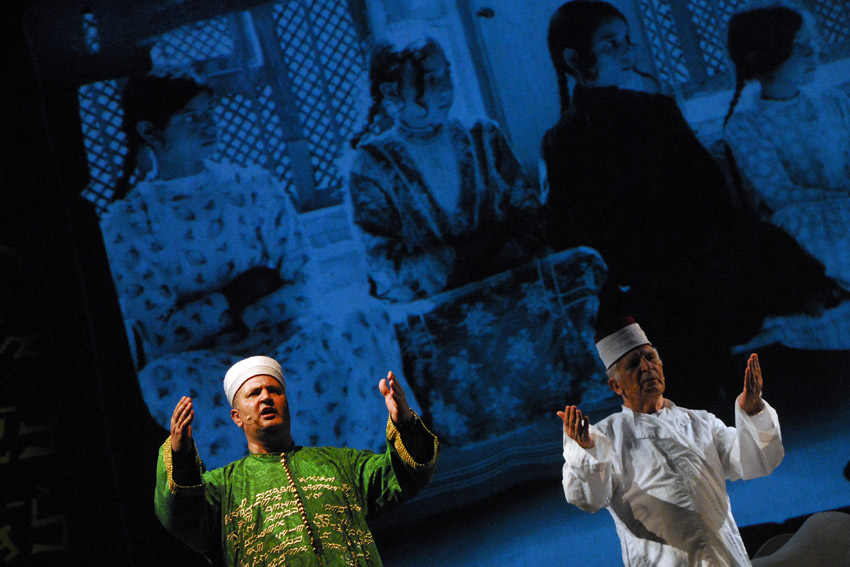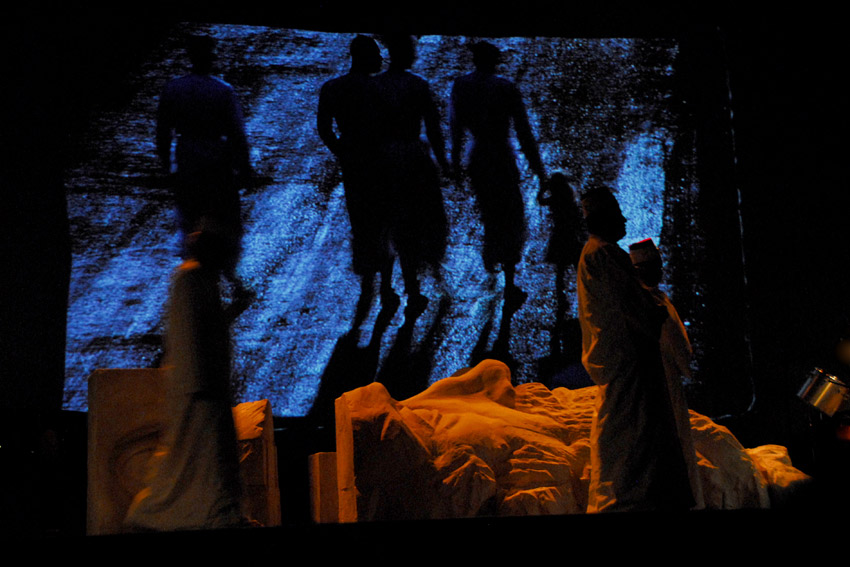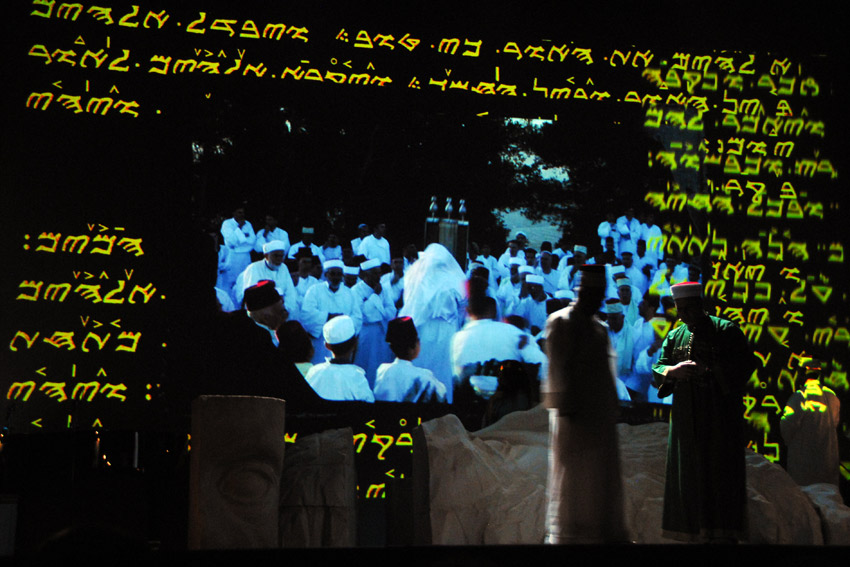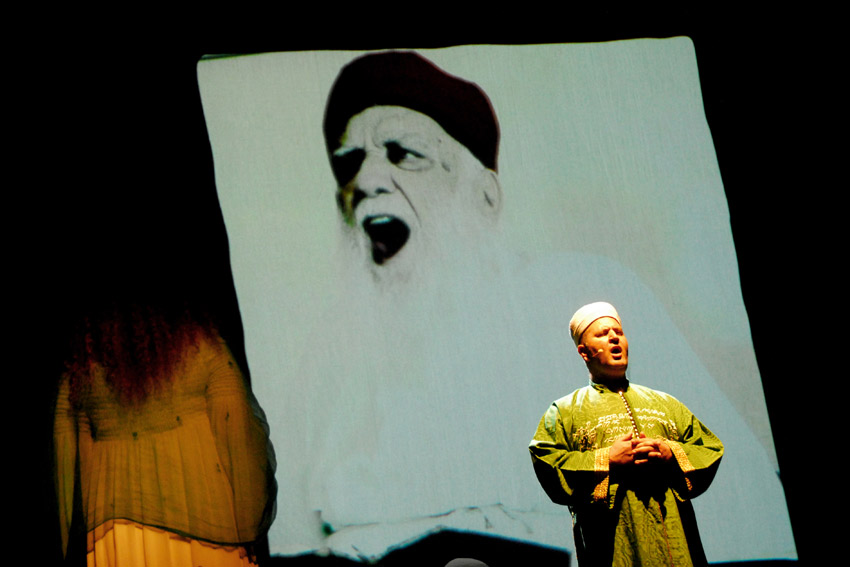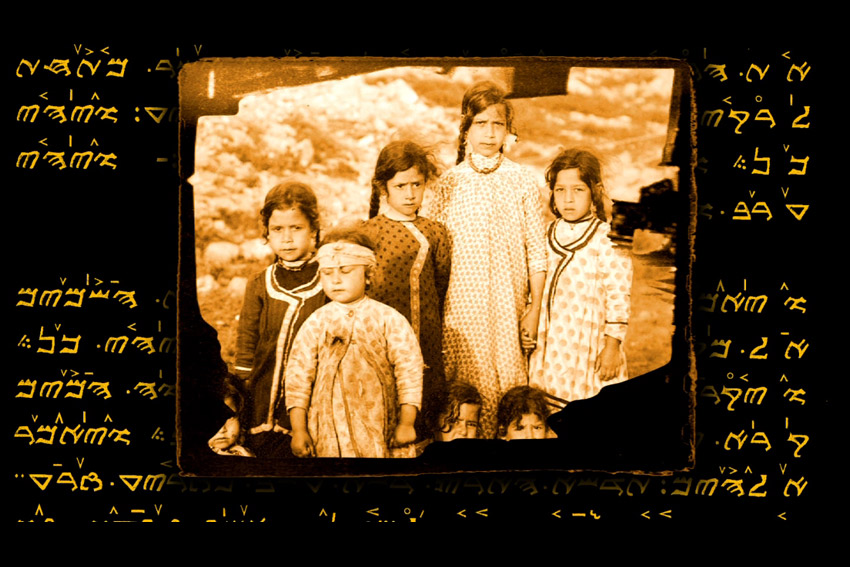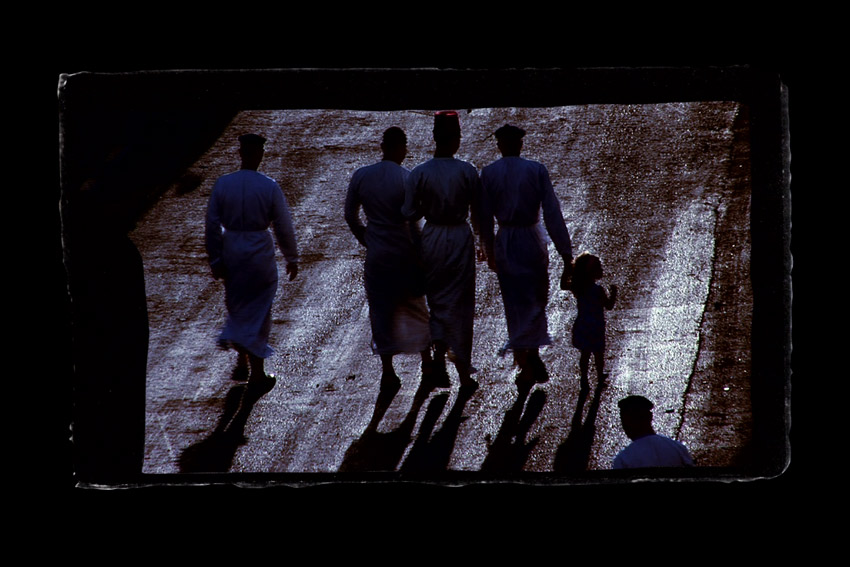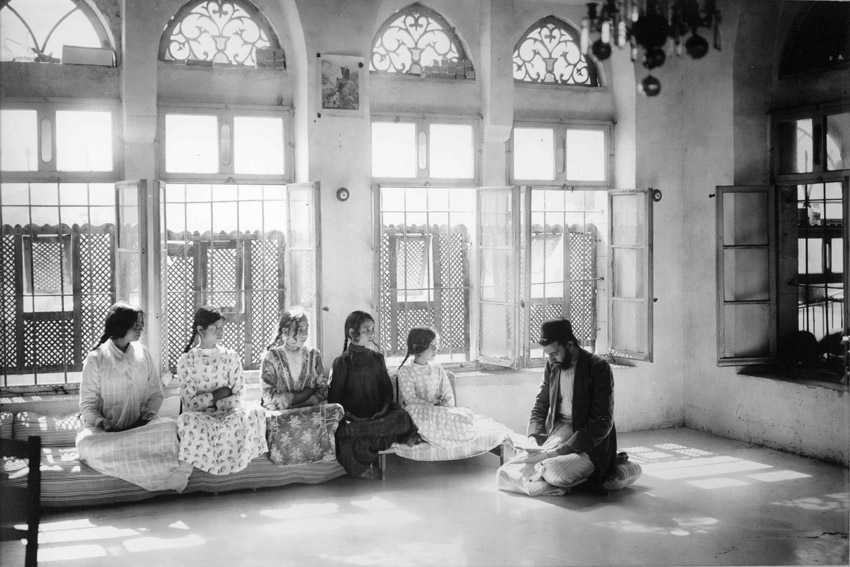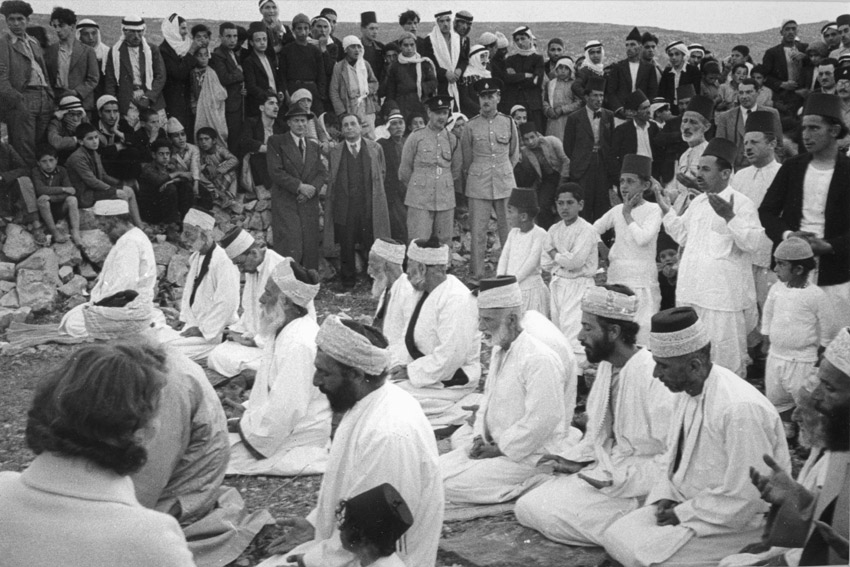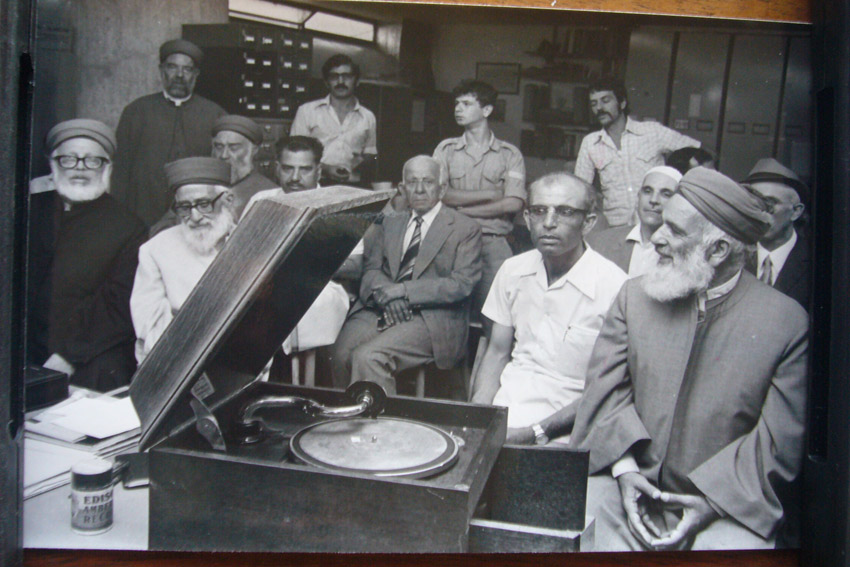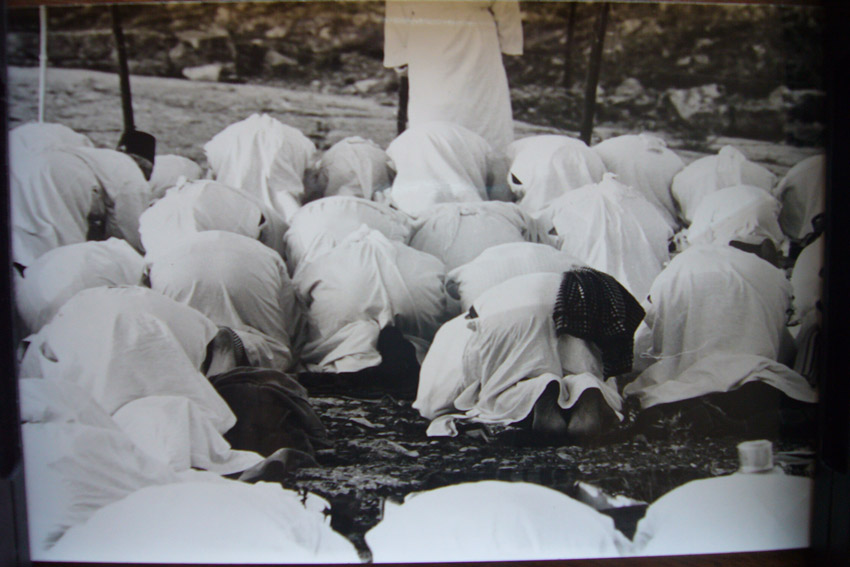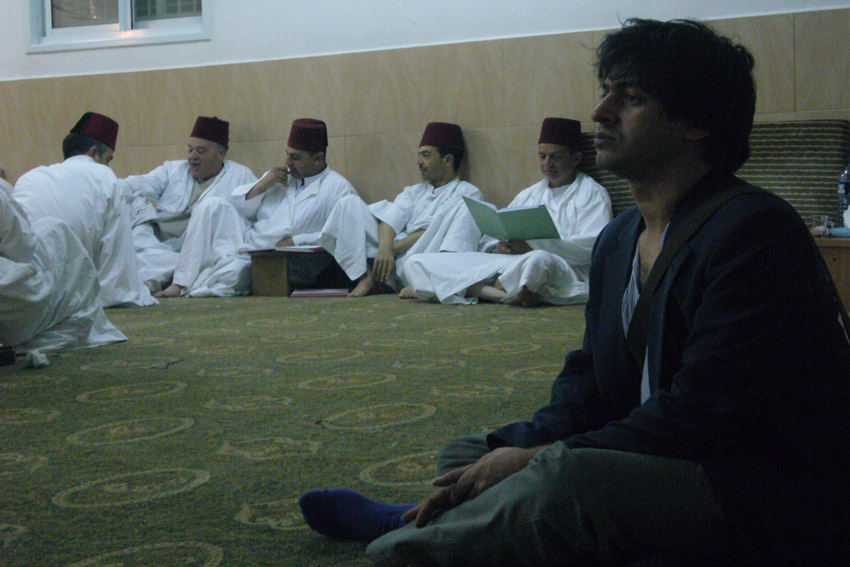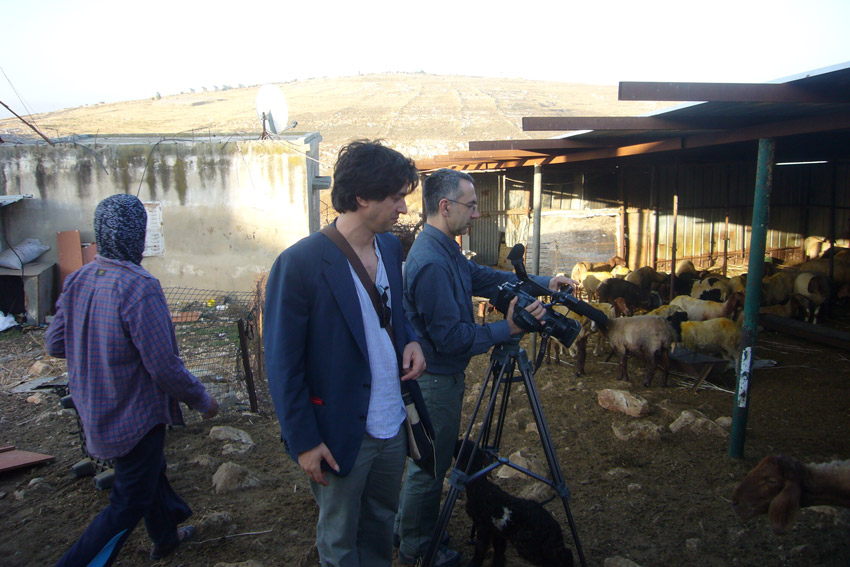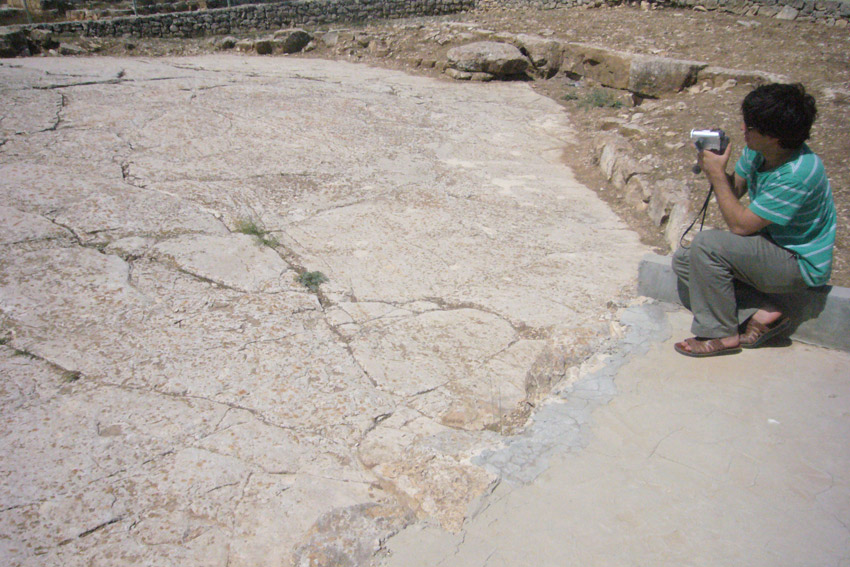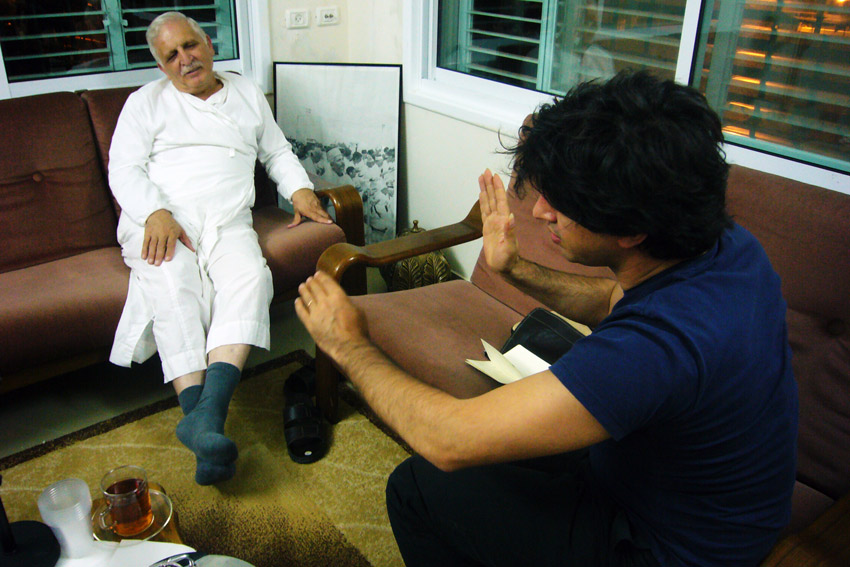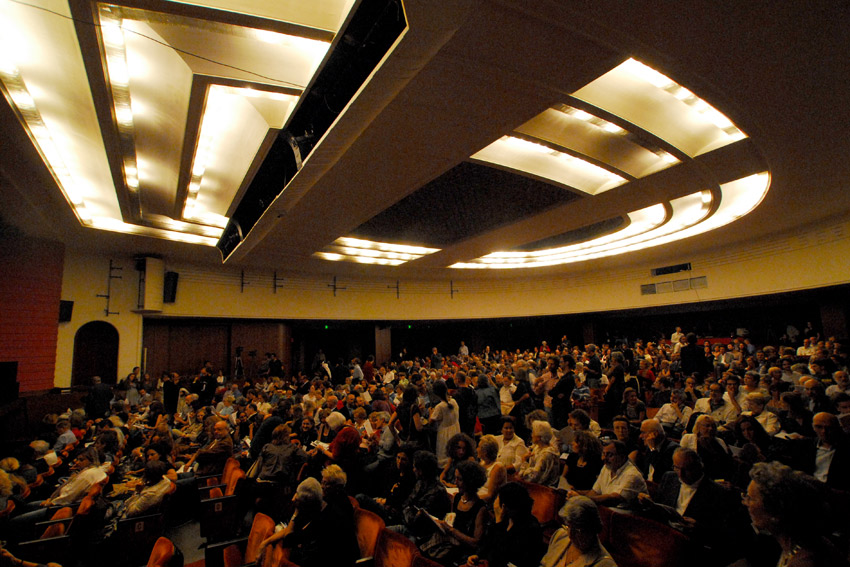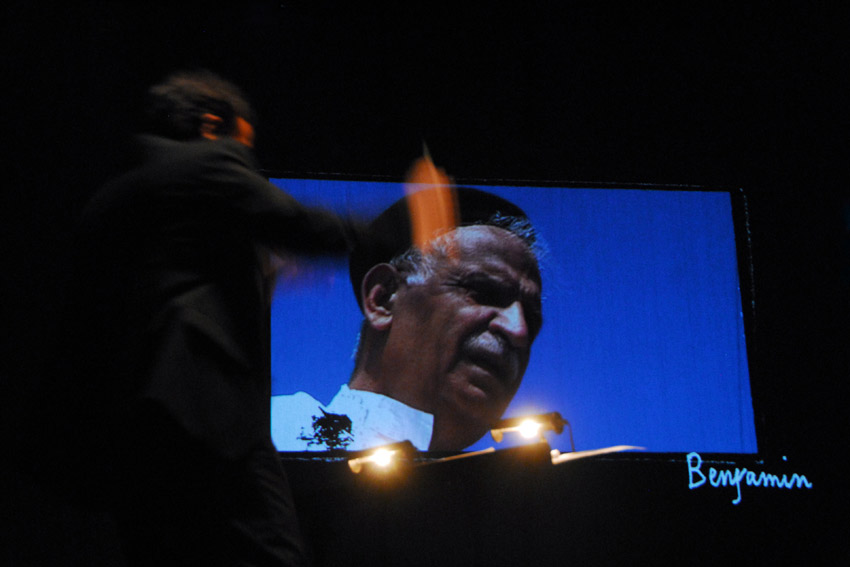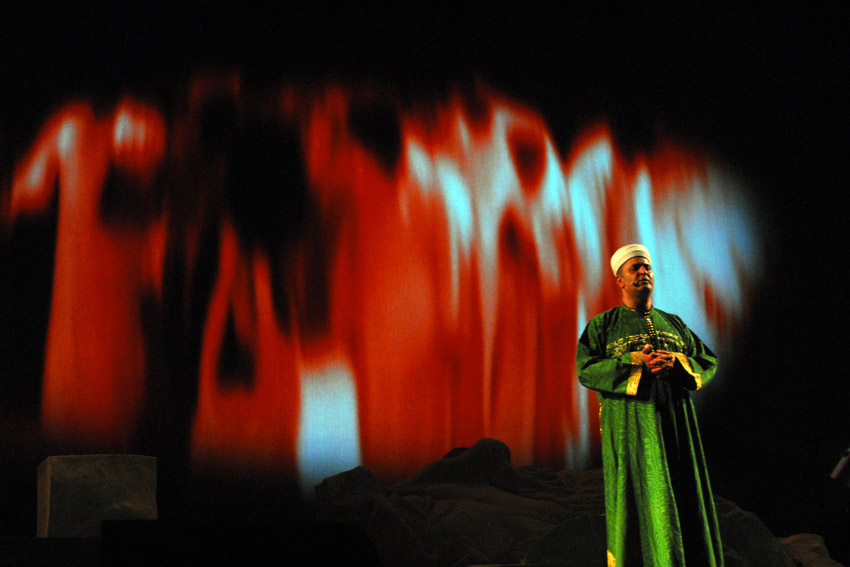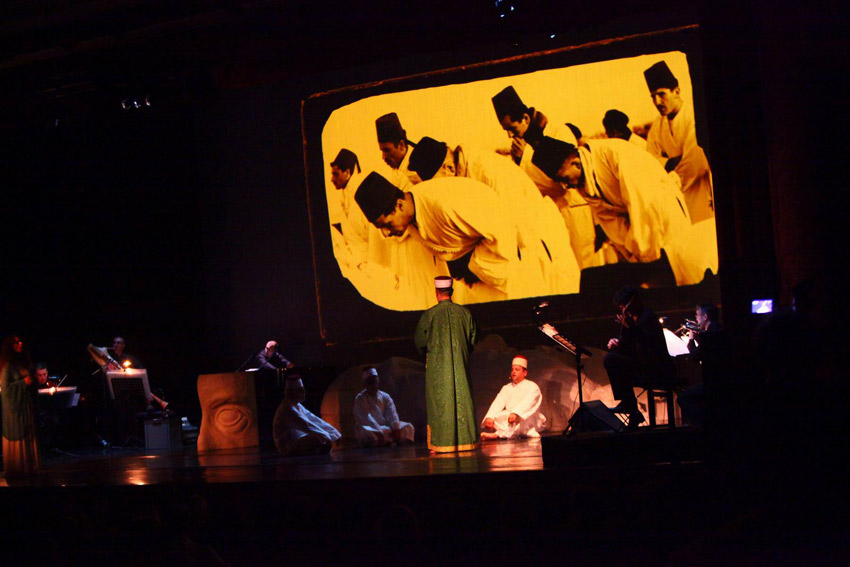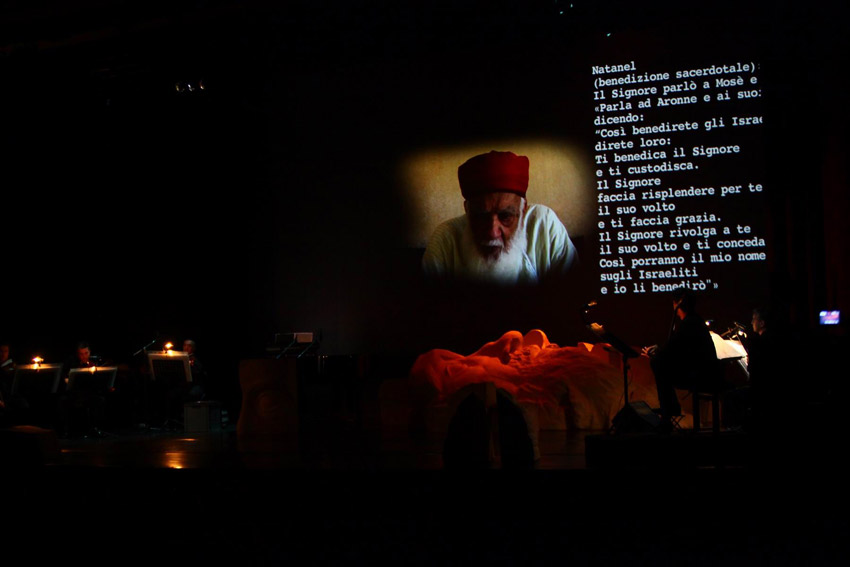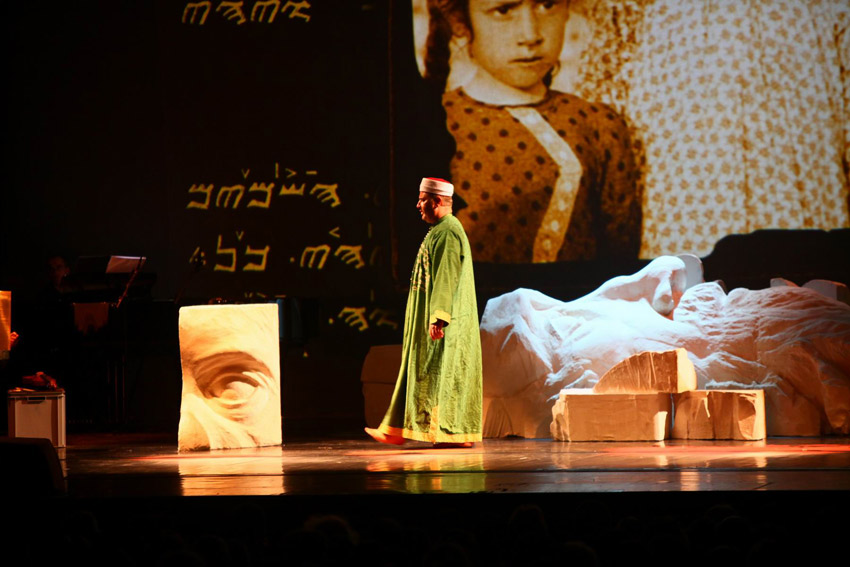- Home
- SAMARITANS - Icon/sonic opera N.2
MiTo SettembreMusica, Milan, September 2010, Teatro Nuovo
Small orchestra, Samaritan choir, video, tape & live electronics
“Not a simple staging of the most ancient living population of the Mediterranean, but rather a journey of the Occidental culture toward them, in which are narrated hopes, fears, holiness and daily.”
(Corriere della sera daily, September 2010)
“Samaritans could be understood as a documentary, a contemporary opera, a mystical-liturgical ritual of undoubted expressive force. A demonstration of what could be achieved through bridging millenary cultures and the most advanced technologies in the service of art.”
(Insound magazine, October 2010)
“A contemporary opera which blends ancient chants and multimedia (...) a journey between archaic rituals and modern check-points of a war zone.”
(Simona Spaventa, La Repubblica daily, September 2010)
Sample Score - Download
Samaritans creates an unusual bridge between the musical and ritual tradition of one of the most ancient peoples of the Mediterranean and contemporary performing arts and music.
Combining a Samaritan choir, an ensemble of contemporary music, live electronics, video, stage design and narration, Avital presents a complex storytelling which shares the collective past of the Samaritans, their individual present, and the sacred and mystical dimension of this unique culture.
The Samaritans
The Samaritans are primarily known in Western culture due to their presence in the New Testament and the parable of the Good Samaritan which became the symbol of altruism. They are an ethnically-religious community of ancient historical roots which developed in a parallel and independent road compared to Judaism.
Their religion is based on the interpretation of a 3,000-year-old Torah, which is believed by them to be the original ancient text. The Samaritan version of the Torah, written in an alphabet different from the Hebrew one, presents numerous variants when compared to the Jewish version. According to their chronicles, they are the most ancient people in the Holy Land. Their spiritual leader is the High-Priest, whom the Samaritan genealogy considers a direct descendent from Aaron, the brother of Moses.
In the past, the Samaritans formed a large community that in some historical periods had reached over one million of people. Today their population is only a few hundreds of people. This decrease in their numbers is the result of numerous historical events which violently affected the Holy Land over the centuries. According to the 2007 census, the Samaritans are a little more than 700, divided between the Israeli city of Holon and the village of Kiryat Luz, in the Palestinian territories, on top of their holy mountain, the Garizim, just above Nablus.
The music
An important part of the Samaritan identity is their musical practice. It is a strictly vocal music, mostly sung by men; the main part of the repertoire is connected to moments of religious ceremonies in which the central event is the chanting and vocal ornamentation of sacred texts. This musical practice is, on the one hand, connected to that of other religions starting with the three monotheistic religions and, on the other hand, it presents some musical indications that are unique to Samaritan music.
Research over the past decades, with the help of new techniques of recording and sound analysis (in particular the recordings of A. Herzog preserved in the National Sound Archive of Jerusalem) demonstrates highly original features related to the techniques of ornamentation, the polyphonic processes, as well as to the formal structure of the songs. Even though the Samaritans had lived for centuries in a highly unstable area next to diverse cultures, their musical practice is different from that of peoples in the Middle-East and the Mediterranean. It is very likely that they represent the original Israelite tradition. Among the most important musical and ritual moments is the one called Yom Mikratà. It is an integral performance of the Torah sung by the men in the synagogue in a nonstop count of over 17 hours during the day before the holiday of Shavuot.
Field research and virtual protagonists
The realization of the opera Samaritans has been shaped by field research done by the composer in collaboration with Prof. Nicola Scaldaferri, supported by Magà Global Arts Around The World, with the help of the Leav, University of Milan. A primary goal of the research was to gather sound and visual examples for the multimedia section of the opera, and experimentation with the traditional singers of new creative possibilities based on an analysis of Samaritan music. However, this produced findings of scientific interest and in a constant dialogue between the artistic dimension and the ethno-musicological research.
Beside the gathering of material regarding the Samaritans and their music, photos, films, an important part involved spending about a week on Mount Garizim documenting the Yom Mikratà and the feast of Shavuot. It is one of three occasions of pilgrimage of the entire Samaritan community to the top of the sacred mountain where, according to their tradition, the Ark of the Alliance and the altar of Isaac's sacrifice were. Another important aspect of our visit to the Samaritans was the interviewing of members who were chosen as leading characters of the opera. They are present in this performance, either in real or virtual way, through the audiovisual multimedia part of the work.
The opera
Samaritans strive to create a multiple path, which unifies sonic and visual languages of the traditions and some musical innovations of our time. It forms a new and fresh avant-garde concept by integrating the representation of an indigenous culture, multimedia elements and music, both ancient and contemporary. It presents an almost surreal tension between the opposite poles of antiquity and the present, the vocal and the instrumental, the traditional and the experimental.
The opera moves between different levels. The first level involves an introspective, intimate journey of the artist that reflects an almost autobiographical path where his poetic point of view leads the audience to the inner reality of the Samaritans.
The second level focuses on the “protagonists” of the opera, the main figures of the Samaritan identity and its metaphysical beliefs (for example about the Mount of Gerizim and the figure of Moses) narrated often in a form of crossed episodes.
The other two levels are the allegorical, in which the sonic and visual representations explore the fundamental symbols of this culture, and the purely musical ones, where the sound of contemporary musical languages meet the sound of the ancient Samaritan chant in a dialectic relationship. Eventually, there is a synthesis of a “new” Samaritan music in which the ancient elements are used as bricks to create new expressive codes.
Documentary film in SKY Classica of the opera
